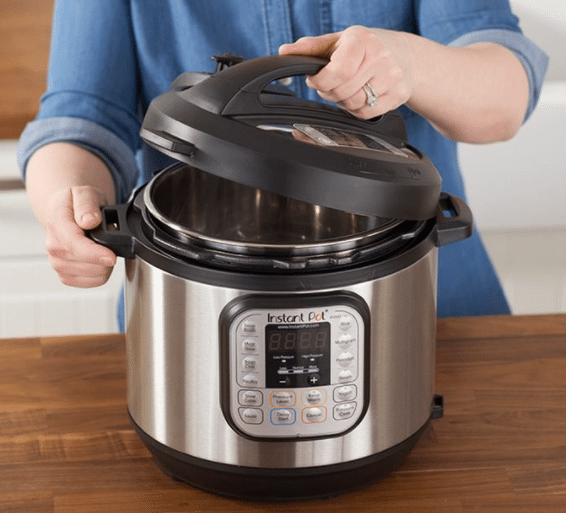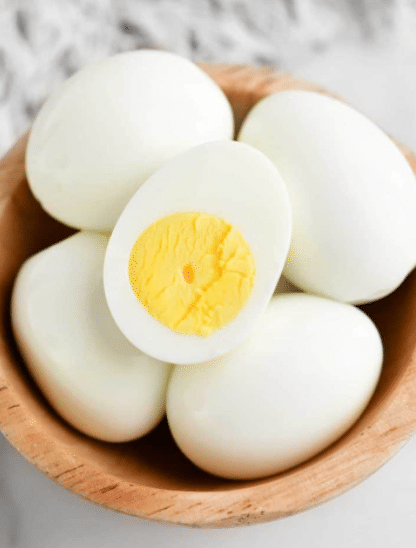Eggs are the most popular food in the world. They are eaten at breakfast, lunch, and dinner by billions of people every day. In the U.S. alone, over 250 billion eggs are eaten each year. That is a LOT of eggs! Of those millions of eggs eaten a day, a ton of them are boiled! People have been boiling eggs since nearly the beginning of time. As a result, there are many different techniques for boiling eggs—but which one is best?
Steaming

Steam the eggs by adding about one inch of water to a pot. Put the lid on it so that there is not any steam escaping. Next, bring the water to a low boil over medium heat. When the water starts to boil, add your eggs carefully to ensure you fully submerge them in the water. Use a timer set for between 6-8 minutes. If you want your egg cooked through but the yolk is still slightly runny, cook for 6 minutes. If you want your egg yolk completely cooked, cook for 8 minutes or more, depending on how you like it.
Instant Pot
There are a few different techniques for boiling eggs in an instant pot. One way is to put a steamer basket in the bottom of the instant pot so that the water doesn’t touch the eggs. Put in your desired amount of water and add your eggs to the basket, securing them with a lid or foil. Be sure to place them properly, so they do not touch each other. Close the lid and adjust the time according to preference.
As another option, add a cup of water to the bottom of your instant pot and set it to saute. Once it boils, add your desired amount of eggs and cook for 6-8 minutes, depending on how well you like your egg yolk cooked.
Baking
To bake your eggs, preheat your oven to 350 degrees Fahrenheit. Carefully place the eggs on a cookie sheet lined with parchment paper, with space between each egg. Put in the oven for 20-25 minutes, depending on how you like your yolk. Remove the eggs from the oven after cooking time is up and let them cool before eating them.
Microwaving

To microwave boiled eggs, use a large mug and place two tablespoons of water inside it. Place two eggs inside it carefully. Set for between one minute to five minutes depending on how runny you like your yolk, then let them sit in the microwave for an additional 2-3 minutes to finish cooking. Take out using oven mitts and serve!
Steeping

Most people boil their eggs with a stovetop, but using a kettle is also an option. Put water in the pot until it’s about mid-level, and add an egg. Turn the stove to high and let it boil until the water has poured out of the pot, and all you can see is bubbles on the bottom. When this happens, turn off the heat and allow the egg to sit for 10 minutes in its boiling water before removing it from the pot and cooling it in cold water.
Simmer

There are a few ways to cook a hard-boiled egg using a simmer method. One way is to place the eggs in simmering water and let them cook for ten minutes before taking them out and putting them in cold water. Another way is to put the eggs in a pot with some salt and let them simmer for eight minutes before turning off the heat and letting them sit for about six more minutes. Then, cool the eggs in a bowl of cold water.
Another way is to put eggs in a pot of cold water that covers the eggs completely. Make sure the eggs are not touching each other or the bottom of the pot. Turn heat on high and bring to a boil for one minute. Then, turn off the heat and cover with a lid. Let sit for seven minutes before taking them out and cooling them in ice-cold water.
Slow Cooker

You can also cook hard-boiled eggs in a slow cooker. One method of cooking hard-boiled eggs in a slow cooker is to add 2 cups of water and 4-6 eggs, depending on the size. Turn the heat to high for about 45 minutes to one hour until the water has mostly boiled off. If you want your eggs to have a much softer yolk, then turn the heat down just before boiling off the water. Then wait for at least 20 minutes before eating.
Conclusion
To boil eggs, you have many options that work well for different preferences. Different techniques will produce slightly different results in each case. In general, boiling is a quick and easy way to cook hard-boiled eggs with little clean-up needed. It can be tricky, though, to make sure your egg yolks are cooked perfectly. Each method has its pros and cons depending on what kind of boiled eggs you want. So, if you’re looking for the best way to boil an egg, give these methods a shot and see which one works best!



